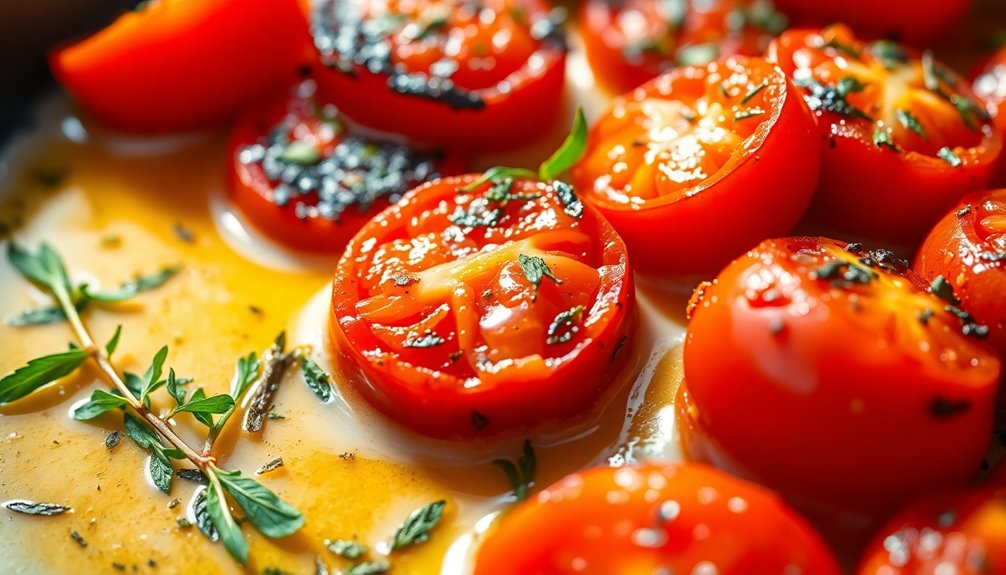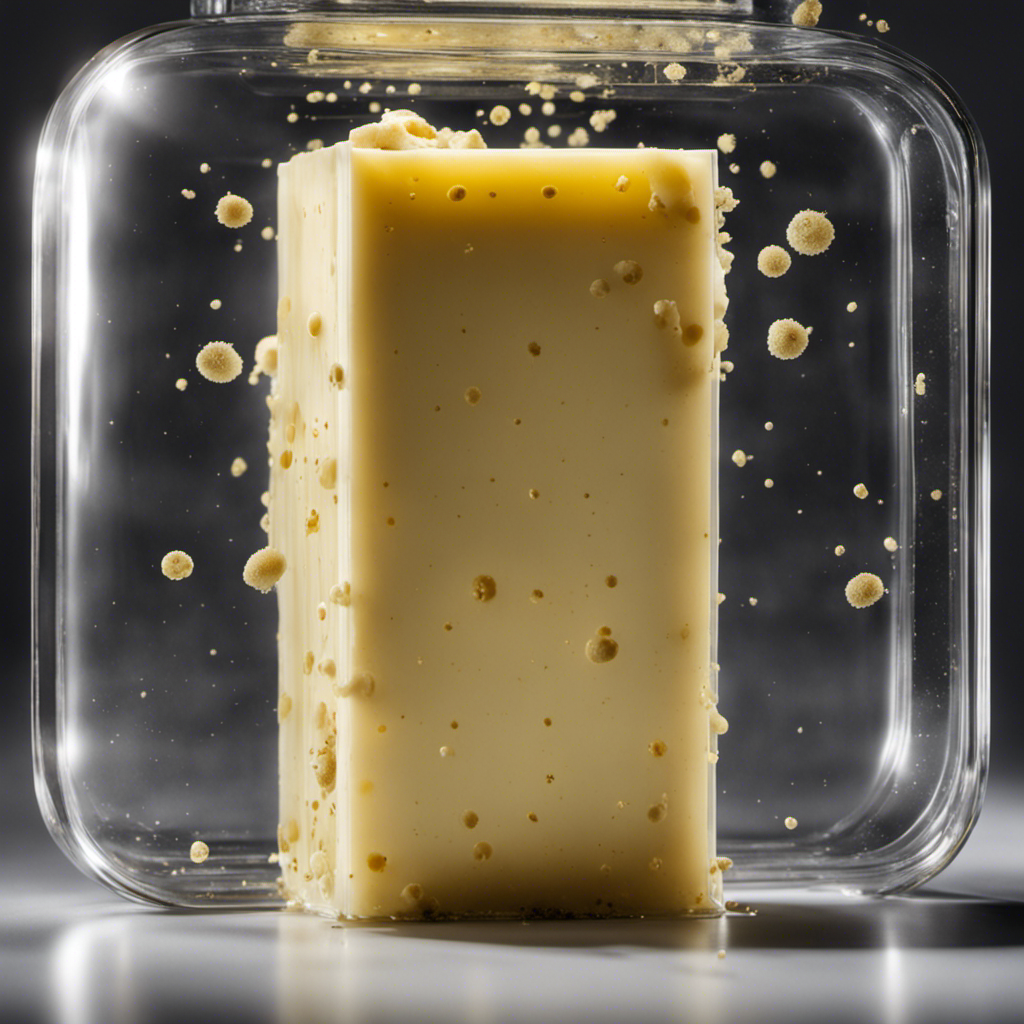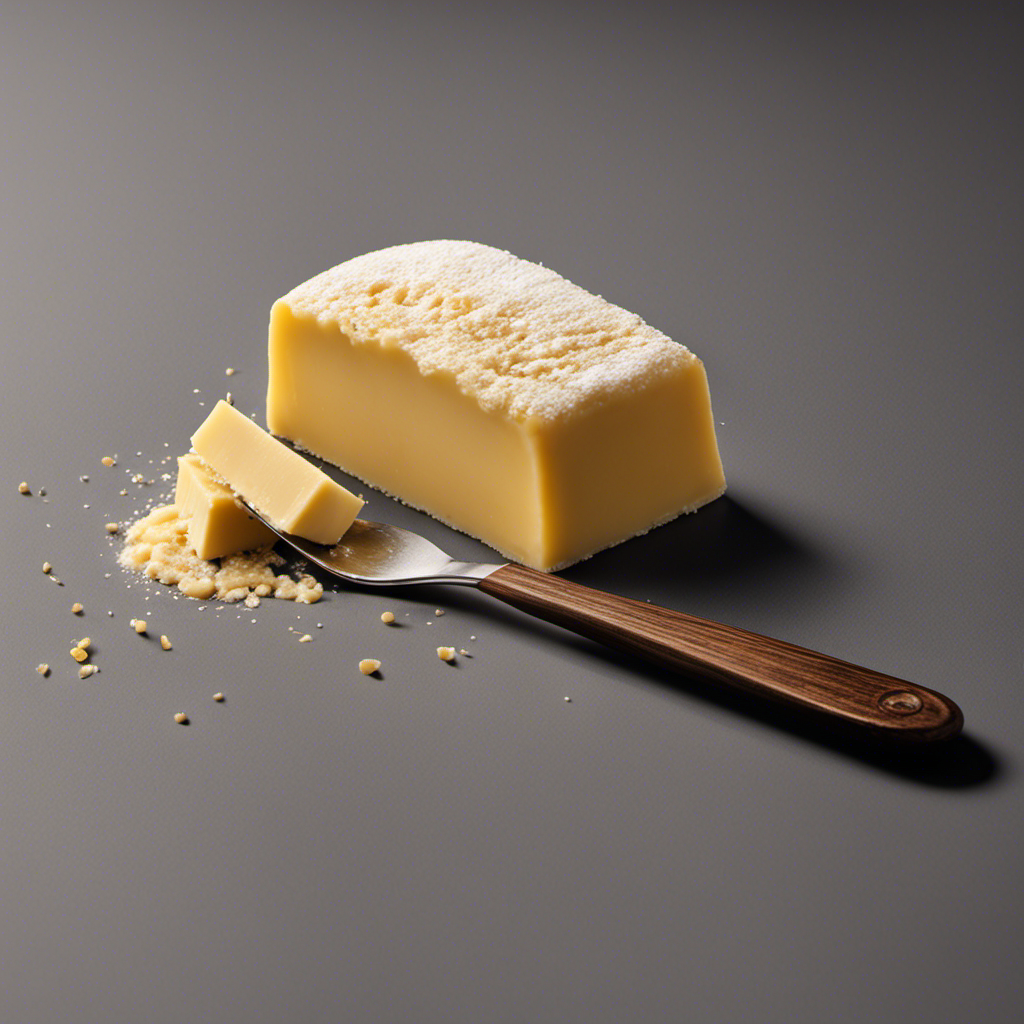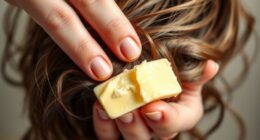I have a theory that will make your taste buds dance with delight: goat butter is the secret ingredient you have been overlooking in your culinary endeavors.
But where can you find this creamy, velvety goodness? Fear not, dear foodies, for I have scoured the land in search of the best spots to procure goat butter.
From local farmers’ markets to online retailers, I’ve got the inside scoop on where to find this delectable delight.
Get ready to elevate your cooking game to a whole new level.
Key Takeaways
- Goat butter can be found at local farmers’ markets, specialty grocery stores, online retailers, and farm-to-table restaurants.
- Buying from local farmers’ markets supports the local economy and ensures fresh and high-quality produce.
- Goat butter is popular among those with lactose intolerance or dairy sensitivities.
- Online retailers provide a wide selection of specialty ingredients, including goat butter, and make it easier to access this unique ingredient.
Local Farmers’ Markets
I can usually find goat butter at my local farmers’ market. Shopping at farmers’ markets has many benefits, especially when it comes to buying local produce. One of the main advantages is that you can support local farmers and contribute to your community’s economy. By purchasing directly from farmers, you also ensure that the produce is fresh and of high quality.
When it comes to shopping at farmers’ markets, there are a few tips to keep in mind. Firstly, arrive early to have access to the best selection. Secondly, bring cash as many vendors may not accept credit cards. Lastly, take the time to talk to the farmers and learn more about their products. This won’t only enhance your shopping experience but also deepen your appreciation for the local food you’re buying.
Specialty Grocery Stores
My go-to grocery store usually carries a wide range of specialty products, including goat butter. Goat butter is a unique and versatile ingredient that can add a rich and creamy flavor to a variety of dishes. It’s especially popular among those who are lactose intolerant or have dairy sensitivities, as goat butter contains lower levels of lactose and is easier to digest than cow’s milk butter.
In addition to its health benefits, goat butter can be used in a multitude of recipes, from savory dishes like roasted vegetables with goat butter to sweet treats like goat butter cookies. If you’re looking to incorporate goat butter into your cooking, specialty grocery stores are a great place to find it. However, if your local stores don’t carry it, there are also many online retailers that offer a wide selection of goat butter products.
Online Retailers
One option for purchasing specialty ingredients like goat butter is to explore online retailers that offer a wide selection of products.
When it comes to goat butter, there are several health benefits compared to cow butter. Goat butter is known to be easier to digest, as it contains smaller fat molecules and a different protein structure. It’s also lower in lactose, making it a suitable option for those who are lactose intolerant.
Incorporating goat butter into your everyday cooking is easy and can add a unique flavor to your dishes. You can use it as a spread on toast, melt it over vegetables or pasta, or even use it in baking recipes. Its creamy texture and slightly tangy taste make it a versatile ingredient that can elevate your cooking to the next level.
Farm-to-Table Restaurants
Visiting farm-to-table restaurants allows me to enjoy fresh, locally sourced ingredients in a vibrant and sustainable dining experience. These restaurants prioritize sustainable sourcing practices, which not only benefit the environment but also support local farmers and the local economy. By sourcing their ingredients from nearby farms, farm-to-table restaurants reduce the carbon footprint associated with long-distance food transportation. Additionally, they often work closely with farmers to ensure ethical and responsible farming practices. This commitment to sustainability extends beyond just the food; many farm-to-table restaurants also focus on reducing waste and promoting recycling. By supporting these restaurants, I am not only indulging in delicious meals but also making a positive impact on the environment and local community.
| Sustainable Sourcing Practices | Impact on Supporting Local Farmers |
|---|---|
| Locally sourced ingredients | Economic support |
| Ethical farming practices | Preservation of farmland |
| Reduced carbon footprint | Increased demand for local produce |
Goat Farms and Creameries
At the goat farm and creamery, I enjoy sampling a variety of artisanal goat cheeses made from the milk of their own goats. The farm takes pride in producing high-quality goat milk products, including their delicious goat butter.
Goat butter is a rich and creamy alternative to traditional butter, with a unique flavor profile. It’s packed with essential nutrients like vitamins A, D, and E, as well as healthy fats and proteins.
One of the key health benefits of goat butter is its easier digestibility compared to cow’s butter. The smaller fat globules in goat butter make it more easily absorbed by the body, making it a great option for those with lactose sensitivities or digestive issues.
Additionally, goat butter contains higher levels of medium-chain fatty acids, which are known for their antimicrobial and anti-inflammatory properties. So, not only does goat butter taste delicious, but it also offers numerous health benefits.
Frequently Asked Questions
How Can I Make Goat Butter at Home?
To make homemade goat butter, start by collecting fresh goat milk. Let it sit for a few hours to allow the cream to separate. Next, skim off the cream and transfer it to a mixing bowl. Whip until it thickens, and voila, delicious goat butter! Here are some tips for making goat butter at home.
Are There Any Health Benefits to Consuming Goat Butter?
Consuming goat butter has numerous health benefits. I’ve personally experienced its nourishing effects on my skin, which became smoother and more radiant. Goat butter is rich in essential nutrients like vitamins A and E, making it a great choice for skincare.
Can I Substitute Goat Butter for Regular Butter in Baking Recipes?
Yes, you can substitute goat butter for regular butter in baking recipes. It adds a rich and slightly tangy flavor. You can find goat butter at specialty grocery stores or online. Try it in recipes like cookies or pound cake for a unique twist.
What Is the Shelf Life of Goat Butter?
The shelf life of goat butter can vary depending on storage conditions, but it is generally around 3-4 weeks when refrigerated. As for where to buy goat butter, local farmers markets or specialty grocery stores are great places to find it.
Are There Any Vegan Alternatives to Goat Butter Available in the Market?
There are several vegan butter alternatives available in the market that can be used as dairy-free spreads. These alternatives are made from plant-based ingredients and provide a similar taste and texture to traditional butter.
Conclusion
In conclusion, finding goat butter in Breath of the Wild can be a challenge, but it’s well worth the effort.
While some may argue that it’s easier to stick with traditional butter options, the unique flavor and creamy texture of goat butter adds a delightful twist to any dish.
So, embrace the adventure and seek out local farmers’ markets, specialty grocery stores, and online retailers to experience the rich and distinct taste of goat butter in your cooking.
You won’t be disappointed!










